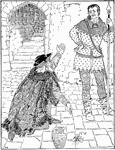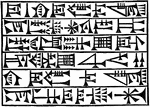Clipart tagged: ‘characters’

Characters
Characters of the Native Americans. The eight figures in the upper row, with hats on, and with muskets…

Type Writing Machine
A typewriter is a mechanical device with a set of "keys" that, when pressed, cause characters to be…

Picciola
An illustration of the story, Picciola by X. B. Saintine. Count Charney was imprisoned by the Emperor…

